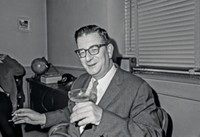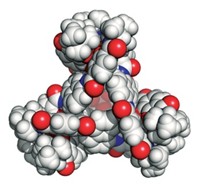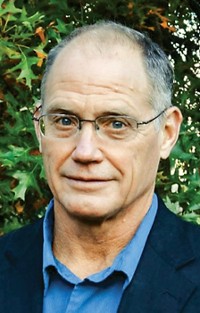Advertisement
Grab your lab coat. Let's get started
Welcome!
Welcome!
Create an account below to get 6 C&EN articles per month, receive newsletters and more - all free.
It seems this is your first time logging in online. Please enter the following information to continue.
As an ACS member you automatically get access to this site. All we need is few more details to create your reading experience.
Not you? Sign in with a different account.
Not you? Sign in with a different account.
ERROR 1
ERROR 1
ERROR 2
ERROR 2
ERROR 2
ERROR 2
ERROR 2
Password and Confirm password must match.
If you have an ACS member number, please enter it here so we can link this account to your membership. (optional)
ERROR 2
ACS values your privacy. By submitting your information, you are gaining access to C&EN and subscribing to our weekly newsletter. We use the information you provide to make your reading experience better, and we will never sell your data to third party members.
Synthesis
Chemists champion their future at 2017 National Organic Chemistry Symposium
Speakers at the meeting defend the field and call for more collaboration
by Tien M. Nguyen
July 24, 2017
| A version of this story appeared in
Volume 95, Issue 30

Paul Wender was standing center stage, delivering one of the final presentations of the 45th National Organic Chemistry Symposium (NOS). His talk had gone 20 minutes over the allotted time, but the crowd showed no signs of stirring.
Wender, a renowned chemist and Stanford University professor, was holding the audience in thrall as he neared the end of his description of an unpublished synthesis of bryostatin 1, a compound that has shown promise for treating cancer and Alzheimer’s disease and possibly helping eradicate HIV. Isolating bryostatin 1 from natural sources is incredibly laborious, Wender pointed out. “That’s why you need folks like us” to make it.
His lab had devised a 29-step route to the natural product, down from a previously reported 57-step synthesis. The final step in Wender’s new route ends with a deprotection reaction. “And it didn’t work,” he said, drawing sympathetic groans from the audience. After a beat of silence, beaming, he added: “I’m just kidding—it did.”
The crowd’s reaction to Wender’s talk reflected the high level of enthusiasm for and personal investment in the chemical achievements discussed during the June meeting. NOS, a biennial gathering, attracted about 500 organic chemists from 42 companies and more than 150 universities and colleges this year. Held over five relentlessly sunny days at the University of California, Davis, the symposium squeezed in opportunities to enjoy Northern California in the afternoons between nightly poster sessions averaging 70-plus presenters and a rousing lineup of speakers.
The 14 speakers shared the latest advances from their labs while also addressing the future of organic chemistry. Not only did they give advice to student attendees as future torchbearers for the field, but some of them also called for the community to embrace collaboration to aid scientific progress. Still others mounted a defense of the field, wrestling directly with the question, is organic chemistry dead?
Miles of open space
On the morning of June 26, attendees drew close to the stage in the Mondavi Theater, filling the seats in the front third of the expansive auditorium. They wanted to get good seats in anticipation of the first plenary session of the meeting, featuring talks by Phil Baran of Scripps Research Institute California and Sarah Reisman of California Institute of Technology.
Up first, Baran flew through a discussion of one of his lab’s research programs, which uses redox active esters and metal catalysts to swap the ubiquitous carboxylic acids on molecules for a number of useful functional groups, including alkenes, alkynes, and boronate esters. One substrate table after another glided across the screen as he demonstrated the scope of each reaction.
In a series of side-by-side comparisons, Baran showcased the utility of the decarboxylative alkenylation reaction to enable streamlined total syntheses. In one example, he showed how his group constructed the natural product cladospolide B in five steps, whereas a previous route took 14 and, Baran said, “unfortunately” used the Wittig reaction.
According to Baran, academics “bend to the whims” of the Wittig, which relies on phosphorus ylide compounds to convert carbonyl groups to alkenes and may require various adjustments of oxidation state and chemoselectivity considerations. He added that the Wittig will always be needed in some situations and that at the introductory level it’s important to know the foundational reactions; otherwise you’d be doomed to reinvent the wheel.

But at the same time, “it’s important for us to stay vigilant that organic synthesis be useful,” he said. One idea that appears regularly in various corners of science—and that Baran disputes—is that organic chemistry is a mature field and therefore has nowhere left to go.
For instance, in a Nature editorial from 2011, prominent scientists George Whitesides at Harvard University and John Deutch at Massachusetts Institute of Technology described academic chemistry, including organic chemistry, as a mature science and advocated an overhaul of the field to shift focus to addressing global problems.
Reisman, who presented her group’s total syntheses of the natural product ryanodol and revealed a nearly complete construction of the compound talatisamine, followed up on the thread about the field’s maturity. Some chemists argue that with unlimited resources it’s now possible to construct any molecule, but even if that were true, she said, it’s not enough. She points out that realistically, compounds must still be made with limited resources and in useful quantities, which requires the talents of synthetic chemists.
And there are innumerable compounds that are still being discovered and that have never been made.Marisa Kozlowski, a chemistry professor at the University of Pennsylvania, illustrated this point during the audience participation portion of her talk.
During her presentation, Kozlowski showed that her group had used a microscale, high-throughput screening strategy for reaction discovery. With this technique, the team tested dozens of metal catalysts for their ability to oxidatively couple phenolic compounds. The researchers quickly sidestepped unproductive catalysts, such as iron-based compounds, which they may have otherwise spent time optimizing, before identifying several successful catalysts, such as a chromium-salen compound.
Showing a slide full of oxidatively coupled biarene products, she asked, by a show of hands: “What percentage of these molecules do you think have been previously reported?” The question was multiple choice. The answer that garnered the most hands in the air was 25%.
It turned out the crowd was right: Only a quarter of the compounds had been made before, a fact Kozlowski said she found surprising given the simplicity of the molecules. She closed by noting that much remained to be done in oxidative coupling, bolstering the argument that organic chemistry is far from dead.
Prompted by these remarks, Robert Lees, a program manager at the National Institute of General Medical Sciences who oversees synthetic organic chemistry grants, commented that several of the speakers so far felt the need to defend the field of organic chemistry and asked, “Where is this feeling that you’re under attack coming from?”
Lees wondered if the feeling of threat stems from worries about funding for organic research. From his perspective at NIGMS, he said that synthesis isn’t facing any more stress than other scientific disciplines and that he hopes that chemistry students aren’t going to other areas out of fear of a lack of funding opportunities.
Kozlowski responded by reiterating her sentiments about the need for organic research and stressed to the student attendees, “I think there’s miles of open space.”
Although Baran wasn’t present for the exchange, he told C&EN that he disagrees with Lees and emphasized that there aren’t nearly as many institutions funding pure synthesis as there are institutions funding fields like biology.
C&EN reported data released by the National Science Foundation earlier this year that showed chemistry received 2.8% of the total funding for science in 2015. Chemical and materials engineering each received 1.4%, and physical sciences such as astronomy and physics took in a total of 4.6%. Meanwhile, life sciences such as biology received 60.8%.
Tehshik Yoon, a professor at the University of Wisconsin, Madison, also ruminated after his talk on the question of whether organic chemistry’s fate was sealed. “How would you know” if there was nothing left to discover? he asked.
Reflecting later on his remarks, Yoon said pronouncements that some scientific field is dead crop up every few years. As chemists, “we spend a lot of our time thinking about what we don’t yet know. So for me, the idea that anyone could know enough about the entire field of chemistry to be able to predict what the next big thing is, or what things don’t need to be studied any further, that entire idea is really alien to me,” he said.
Since we don’t know what we haven’t yet discovered, chemists should be engaged in all kinds of research, Yoon argued, adding that the best science happens when it’s something that you’re passionate about.
“Love the stuff you love,” he said.
Collaboration, not competition
Well aware that NOS tends to attract students, many of the speakers took the opportunity to address the “new people,” as Stanford’s Wender called them.
“There are more problems than people to solve them,” he said, citing statistics on the more than 7,000 orphan diseases waiting for treatments and the 6,500 new infections of HIV daily. This will change only through collaboration, not competition, he added.
Wender took his own advice, setting up a new collaboration at the meeting with David Olson, a former Stanford student and now assistant professor at UC Davis. Their collaboration focuses on using bryostatin and other analogs to induce biological changes that could influence cognitive abilities affected by Alzheimer’s disease and other neurological disorders.

Martin Burke, a chemist at the University of Illinois, Urbana-Champaign, made another plug for collaboration at NOS. During the final talk of the conference, he pitched a “moon mission” for the chemistry community to consider. The so-called Natural Producteome Project, proposed as a massive effort to synthesize any natural product, could be to chemists what the Human Genome Project was for biologists or what the search for the Higgs boson has been for physicists, Burke said.
In a 2015 Science article, he proposed a road map to automate small-molecule synthesis using iterative reactions that hinge on an N-methyliminodiacetic acid boronate ligand to stitch together molecular building blocks (DOI: 10.1126/science.aaa5414).
The paper evoked a strong and mixed reaction from the chemical community. Some chemists supported the idea as a boon for making drug candidates in the early stages of discovery, while others pointed to the failure of previous technologies, such as combinatorial chemistry, to transform drug discovery. Other chemists doubt the method’s ability to access more complex structures.
Still, Burke remains passionate about one day “handing the power of synthesis over to our nonchemistry colleagues.”
Now his lab is collaborating with Jeffrey Skolnick’s group at Georgia Institute of Technology to compute how many building blocks it would take to synthesize most of the already discovered natural products, which as of 2012 number approximately 240,000, according to the “Dictionary of Natural Products.” More than 75% of linear natural products could be synthesized with only 1,450 fragments, Burke contends.
One of the many questions Burke received after the talk was how he would convince organic chemists to come together and rally around this project, given that chemists tend to stick to the areas they’ve already carved out for themselves. He responded that the umbrella for such a project is huge and has great collateral benefit for the community, including drawing more funding to the field.
Within this project, he said, chemists would “still get to do what they love.”
Spotlight on students
“The beauty of NOS is the combination of plenary and poster sessions,” said Mary K. Boyd, a provost at Berry College and chair of the executive committee of the ACS Division of Organic Chemistry.
Through the meeting’s talks, students learn from not only the cutting-edge science but also the scientists presenting the work. For instance, Moriah Locklear, a graduate student at the University of Nebraska, Lincoln, said that in addition to the science presented in Reisman’s plenary talk, she appreciated Reisman’s honesty in discussing reactions that didn’t work. As a student in the trenches of reaction development, Locklear said she finds these examples comforting.
“I enjoyed seeing how someone like Sarah Reisman thinks,” Locklear added.
This year’s NOS had an “amazing” line-up of speakers, said Kay Brummond of the University of Pittsburgh, who organized the conference along with the University of Arkansas’s Matt McIntosh and local co-chairs Dean Tantillo and Annaliese Franz.
The moderate size of the conference also gives students the opportunity to engage with speakers and receive feedback on their work during the poster sessions.
Advertisement
Katt Frndak, a rising senior undergraduate at Calvin College, gave a spirited overview of her research in alkaloid synthesis at the opening poster session, excitedly gesturing and memorably describing the loss of a “beloved functional group” during her research.
Frndak especially appreciates the opportunity to interact with colleagues at NOS. She recalls last summer being asked by an older, female donor who was passing through the lab on a tour of Calvin College if she enjoyed doing chemistry. “Have fun because I couldn’t,” the donor said, alluding to a not-so-distant past in which women were not encouraged to enter science, an exchange that has stayed with Frndak.
Another student-focused feature of NOS is the Undergraduate Context Session offered midway through the conference. The pizza-catered session gives students a chance to ask questions about any of the chemistry presented during the talks that they had trouble following.
Led by Ronald Brisbois, a chemistry professor at Macalester College, and Jeff Katz, a professor of chemistry at Colby College, this free-flowing hour has been a fixture of the conference since 2005. The session grew out of a suggestion by K. C. Russell, a professor at Northern Kentucky University, who sat in the front of the crowded room.
Brisbois and Katz explained that students were asked to answer each other’s questions before the postdoctoral researchers or faculty, who were standing against the back wall.
Frndak asked the first question: “Can we go over the Wittig?” Others chuckled. “Sure, since Baran’s not here,” someone replied, referring to Baran calling attention to academics’ attachment to the reaction earlier in the conference.
Prompted by Brisbois and Katz, students gave descriptions of each mechanistic step and correctly identified the reaction’s key intermediate, the Wittig ylide, which contains neighboring atoms that possess positive and negative charges.

Other requests included a review of pericyclic reactions, the Suzuki reaction, and “everything that Barry Carpenter presented.” Carpenter, an honorary professor at Cardiff University, had given a mind-bending talk that included advanced mathematical theory on the flawed way in which chemists think of transition states.
From the back of the student session, Christian Hamann, an associate chemistry professor at Albright College, estimated that perhaps 10 people in the audience grasped the talk in its entirety, and admitted to understanding just a fraction of the talk even though it was his second time seeing it.
“My point is that we come to these meetings to learn and sometimes we’re overwhelmed by the vocabulary and the concepts because it’s not what we do every day,” Hamann said. “So if you’re feeling overwhelmed by the vocabulary and everything else, welcome to the club.”
Afterward, a group of students said they enjoyed the session, especially knowing that they weren’t alone in feeling in over their heads, and wished only that it had lasted longer.
Overall, the meeting was “exceptional,” Wender said, adding that he attends a lot of conferences. It brings together young people “that will form bonds—pardon the expression—that will last a lifetime,” he said. Seeing the students’ enthusiasm reassured him about chemistry in the years to come: “These are possibly going to be the collaborators of the future.”





Join the conversation
Contact the reporter
Submit a Letter to the Editor for publication
Engage with us on Twitter